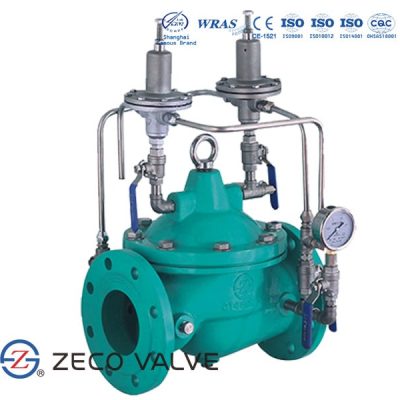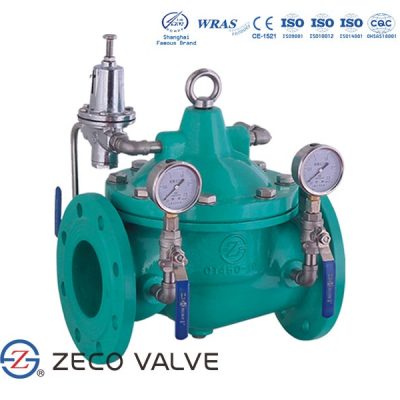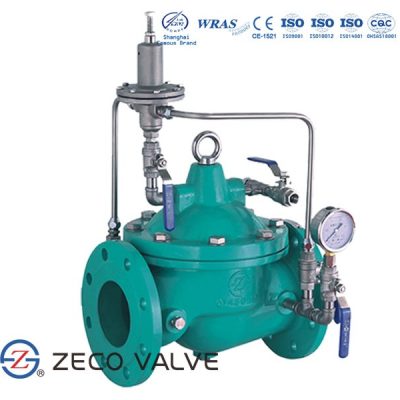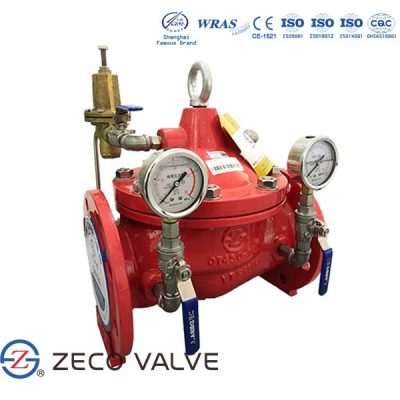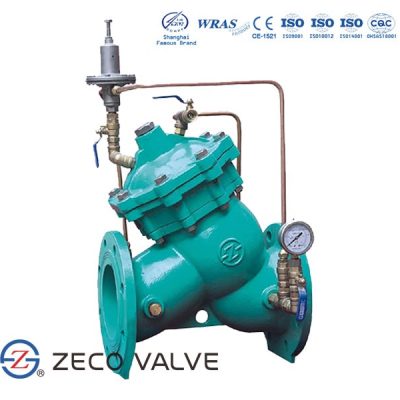What is a Pressure Control Valve?
Pressure Control valves are autonomous line-pressure driven valves, requiring no external energy source in order to continuously control the line pressure.
How does a Pressure Control Valve work?
The throttled position of the main valve is controlled by an adjustable pilot valve operating in conjunction with an orifice (or needle valve). The pilot valve senses the downstream or upstream pressure and reacts immediately as the outlet pressure increases or decreases with varying demand.
The pilot senses the downstream or upstream pressure and reacts immediately to add or remove water from the top of the main valve diaphragm assembly, allowing the valve to reposition and throttle as the outlet pressure tends to increase or decrease with varying flow demand. The pilot diaphragm will automatically sense the changes in the flow of the system as it continuously controls the main valve to throttle or to open or close and maintain the desired, preset reduced outlet pressure or relief pressure.
Type of Pressure Control Valves
Pressure Reducing Valve
Pressure Reducing Valves are designed to reduce incoming water or steam pressure to a safer constant predetermined downstream level.
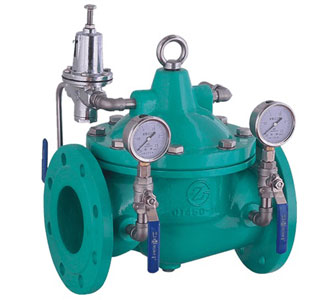
Pressure Relief Valve
In many liquid piping systems, it is vital that line pressure is maintained within relatively narrow limits. Pressure Relief valve is installed in the main flow line, as a backpressure or pressure sustaining valve. The valve maintains a constant upstream pressure regardless of fluctuating downstream demand. When used in a bypass line, pressure relief valve will function as a relief valve, protecting the system against potentially damaging surges.
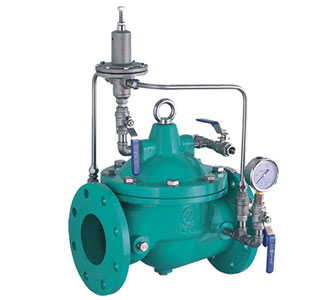
Applications of Pressure Control Valves
- Residential applications
- Commercial applications
- Institutional applications
- Industrial applications
Advantages of Pressure Control Valves
- Pressure reduction
- Load holding
- Sequential control
- Limits system pressure
- Controls the pressure in the selected section of the circuit
- Sequence motion
- Actuator sequence control
- Restrained movement control
- Reduced pressure control
- Pump unloading control

